Old manuscripts can be full of surprises. Going through our collection of Western Manuscripts and Early Printed Books Collection can almost feel like a treasure hunt! You can find amazing and delicate details in the drawings, the margins, and even the letters of the page. But do you know why manuscripts were created so intricately?
The decorative elements found in borders, drawings, and initials on manuscripts had a purpose. These details increased the value of the material while enhancing the appearance of the manuscript. They helped readers to interpret the text by offering visual content, which aided literacy, and by delineating passages of text. Decorations could also be used to demonstrate the importance of the manuscript owner or of the represented person.
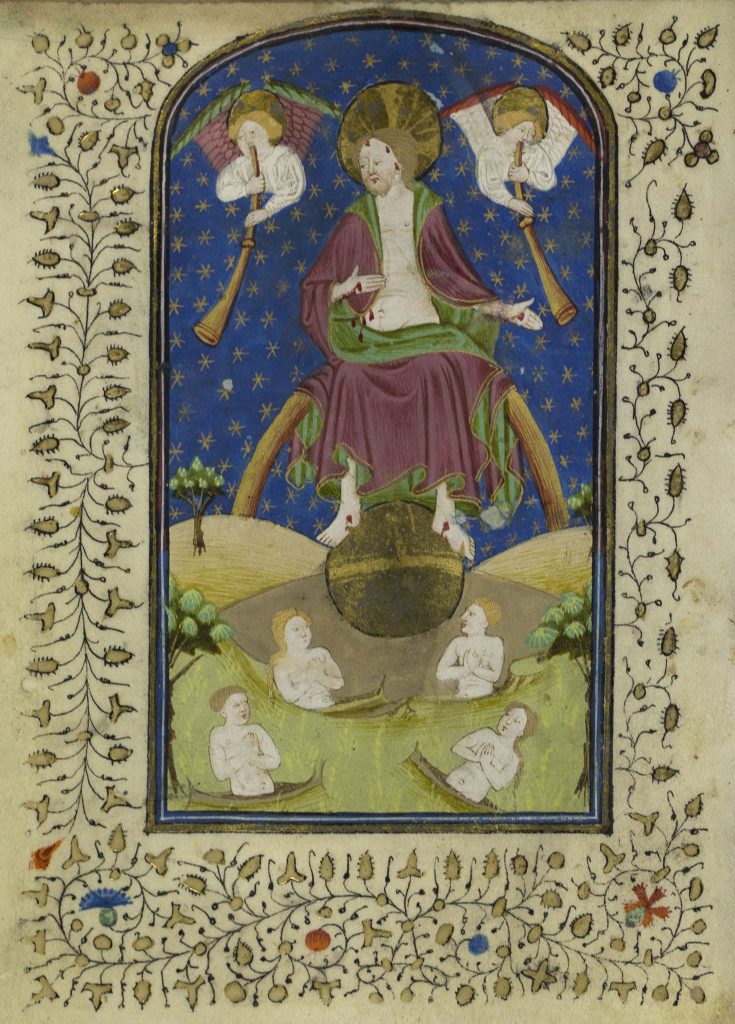
Book of hours, 1440
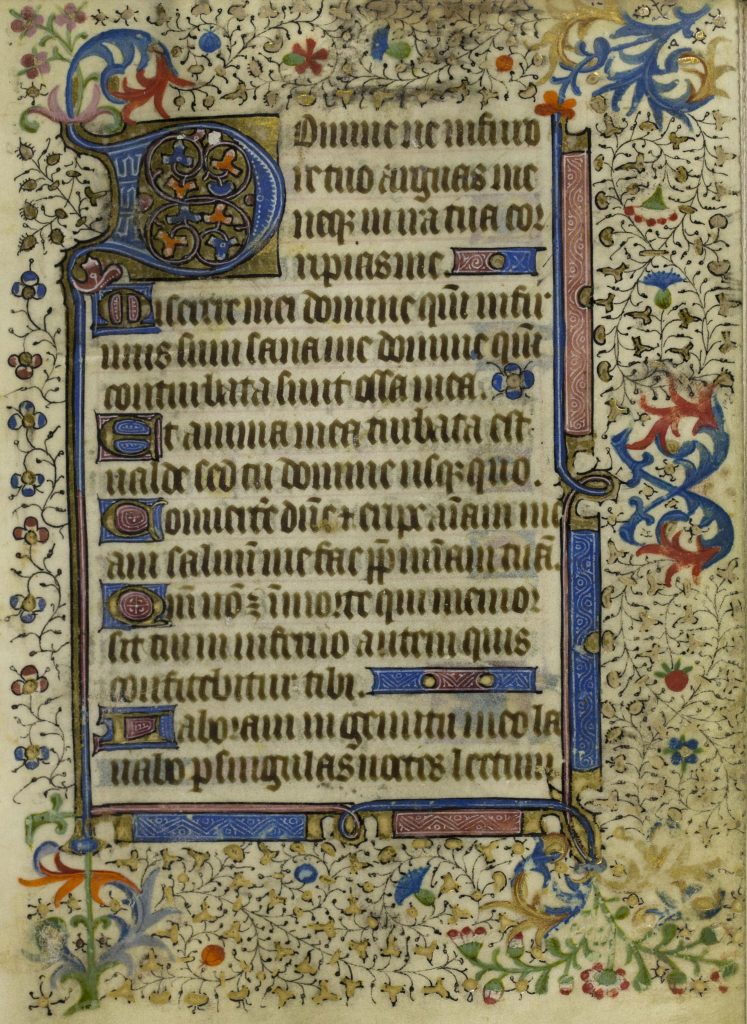
Books of hours, 1440
Illuminated manuscripts often used bright colors from natural pigments, gold leaf and even semi-precious stones for decoration. Illuminators were very skilled and specialized workers, and it was common for a single work to take multiple years to complete. Illuminated manuscripts were of high prestige and were often given as diplomatic gifts or to celebrate dynastic marriages. Although the increasing popularity of the printing press in the 16th century meant that books no longer had to be hand-written, many aristocrats and rulers continued to order these manuscripts for private devotion and viewing.
In addition to illuminations, manuscripts could also incorporate decoration in other ways. Common decorative embellishments were:
- Initials: decorations varied from a simple rubrication (inking the initial letter in red) to drawings inside the initial letter, which were color painted and represented a scene from the text.
- Borders: these varied from a simple pen-work with red or blue ink to borders using gold leaf and pigments. Expensive books sometimes had borders on every page, while others would have borders only on the first page, or to introduce new parts of the text.
- Miniatures: these were smaller works of art that could fulfill a range of purposes, such as providing commentary, deepening the reader’s understanding of the text, or by providing aesthetic and meditative value.
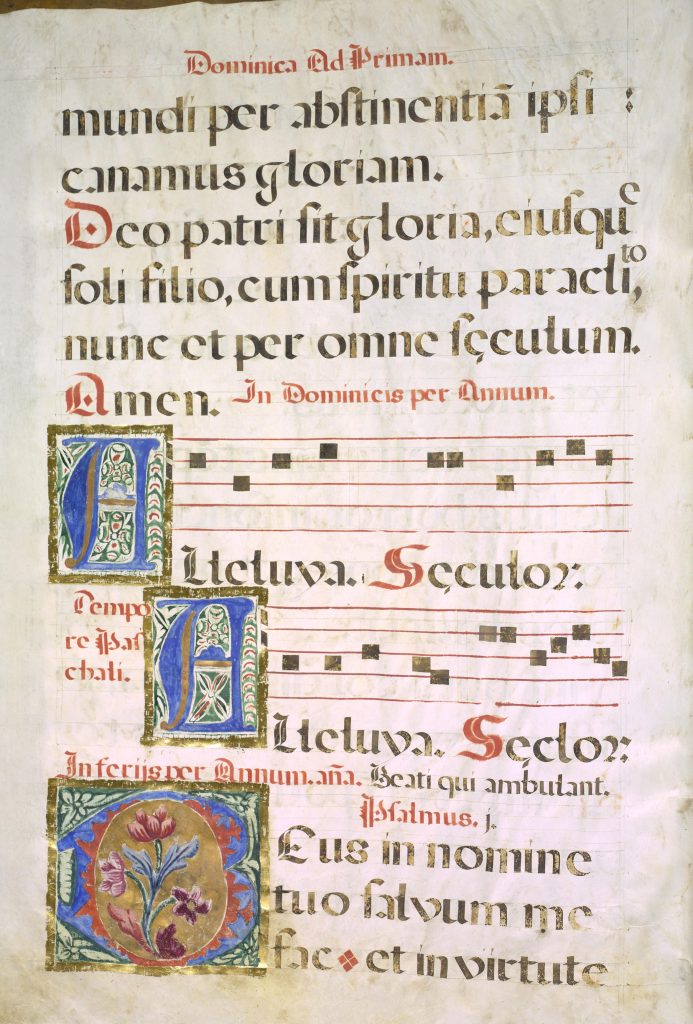
Spanish chant manuscript, 1625
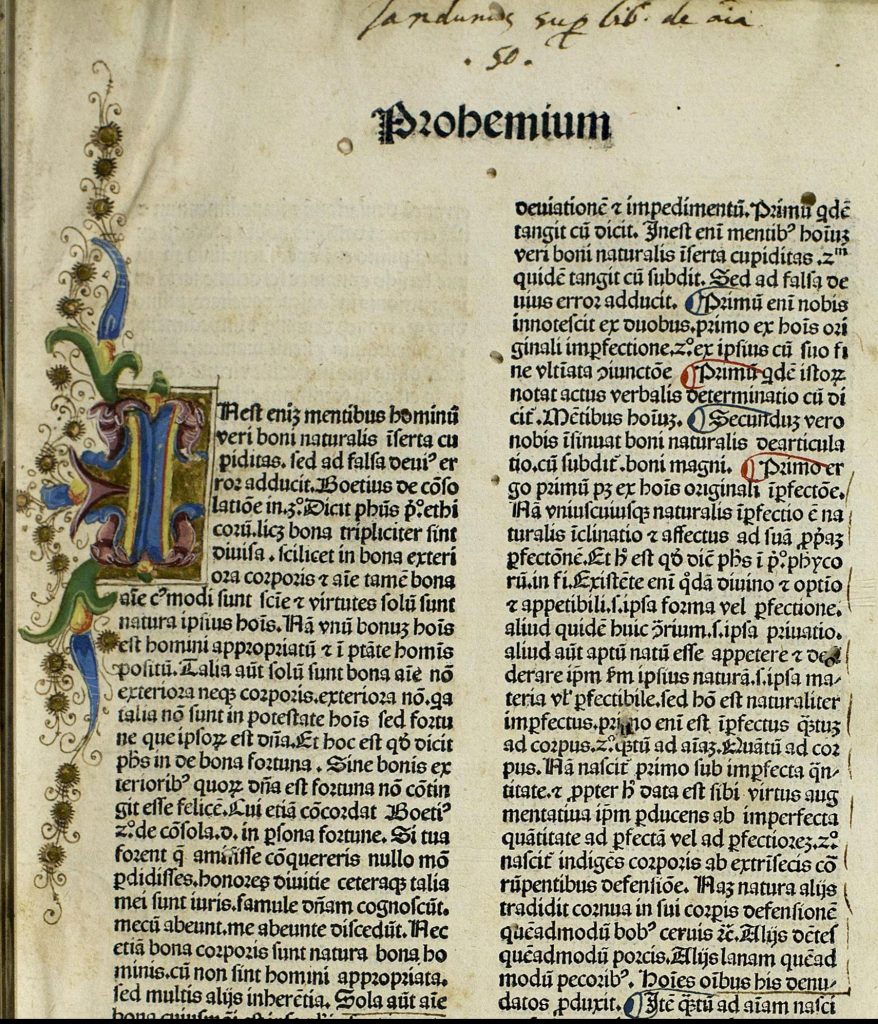
[Quaestiones super tres libros De anima Aristotelis], 1480
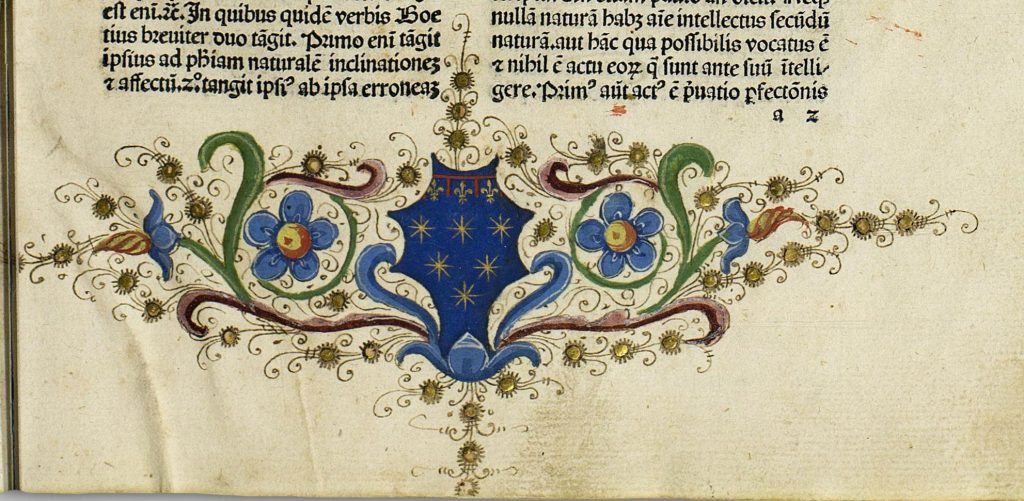
[Quaestiones super tres libros De anima Aristotelis], 1480
Explore our Western Manuscripts and Early Printed Books Collection to check out these and other items!
Sources:
An introduction to illuminated manuscripts (British Library)
Illuminated manuscripts (National Gallery of Art)
Manuscripts and special collections (University of Nottingham)
Manuscript illumination in Northern Europe (Metropolitan Museum of Art)


